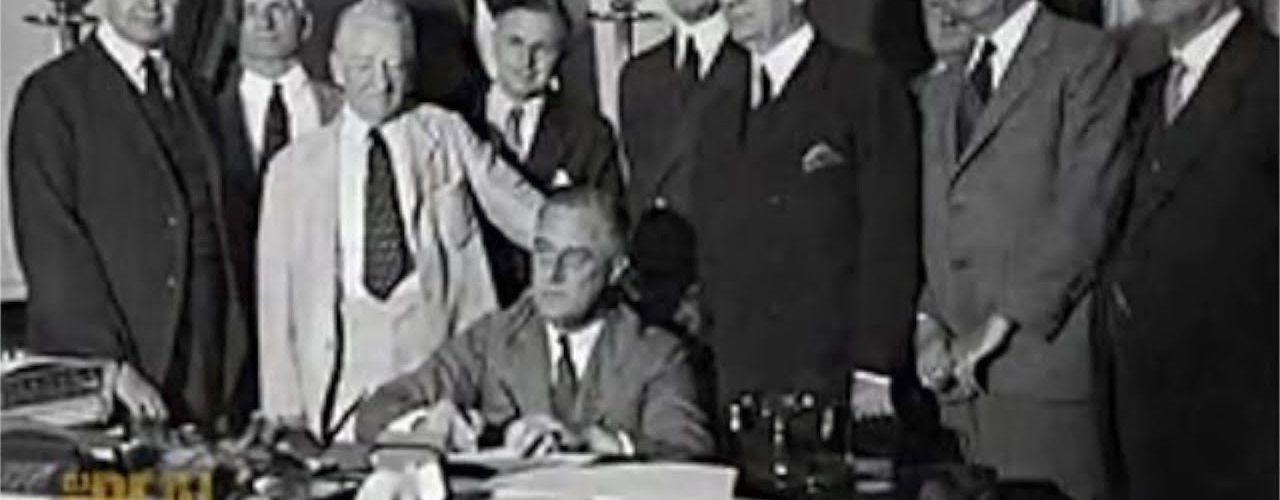In 2013, the US Federal Reserve system turns 100 (1913 – 2013). Jane D’Arista, author of ‘The Evolution of U.S. Finance’ and former staff economist for the U.S. Congress, commenting on the evolution of the US Fed into the present explains how coming into the 2008 financial crisis, we had a central bank essentially based on the notion of a bank-centered financial system and that certainly was no longer the case.
September 4, 2012
***
JANE D’ARISTA, RESEARCH ASSOCIATE, PERI: The Federal Reserve system was created in 1913, and in 2013 it turns 100. In the midst of the Depression, there was important legislation that dealt with the structure of the Federal Reserve, and the effort was to move the economy forward by making monetary policy more effective and more able to contribute to economic regrowth. We have not done this in the aftermath of the Great Recession. We have not looked at the problems we have with an essentially sclerotic Federal Reserve that has no longer the tools that it needs to exercise its mandate to prevent inflation and promote employment.
What we don’t always talk about and realize is the extent to which the structure of the Fed as it is now actually contributed to the crisis that we have experienced. In 2008, coming into the crisis, we had a central bank that essentially was based on the notion of a bank-centered financial system. That certainly was no longer the case. The configuration which we face now, all the other institutions – mutual funds, investment banks, asset issuers, insurance companies – contribute three times as much credit to the system as does the banking system. And we have also not taken into account the important changes in instruments, innovations, etc., that have taken place since 1935, when the act was revived, as it were.
We need to do that now. It’s a very important mission that needs to be accomplished. And part of the reason is this, that over the time period, what we have seen is that the Federal Reserve succumb to the siren call of deregulation. It allowed the creation of a market offshore in which there was no regulation and no influence by the Federal Reserve or any other central bank. The potential for this was enormous and ended up allowing the financial system or market forces, if you will, to be able to create liquidity in a way that the central bank alone should do.
In the process of deregulation, the Federal Reserve lost the important tool that it had used traditionally over time and since its inception to control the supply of credit, and that is reserve requirements. When the Federal Reserve buys and sells government bonds, it changes its balance sheet and either adds to or subtracts from the supply of bank reserves that it holds. Banks have complained over the years about being subject to reserve requirements because, as they said, it means they have a competitive disadvantage with other sectors of the financial system, which is that they have to hold an asset on the balance sheet which does not earn any income. The Fed was very sympathetic to this argument, and, beginning of the 1980s, in addition to allowing no reserve requirements offshore, removed reserve requirements from savings balances as well, and it allowed sweep accounts which permitted deposits to be put into a different category and therefore not subject to reserves, and other strategies that were invented by the banks, which ended up in 2008 with a miniscule amount of reserves held by the Fed for the banking system, a missing cushion against the onslaught of what came to be the worst financial crisis in over 75 years.
The absence of influence on the supply of credit by the central bank became the most important aspect that created the crisis, because the banks were then allowed to do a particular kind of practice that they had invented in the external market, which was to trade among themselves. They were able to take an asset, borrow against it, and buy more assets to borrow against further. In other words, they were building positions. This was creating liquidity like nothing that had ever been done before in the global market, not just in the domestic market. And it was, of course, a house of cards. As the demand for assets grew, weaker credits came into the game, and the game was certain to fail at that point, as indeed it did.
So the collapse, then, if you will, what happened was a run on the financial system by the financial system as asset prices began to fall and there was no recourse and no cushion. The Federal Reserve entered the crisis period with only one tool, a very important tool, and one which went very far in helping with the crisis, and that is its ability to create liquidity, lower interest rates, and hopefully, though not in reality in this event, increase the demand for credit.
They were able – as the house of cards collapsed and liquidity contracted – the Fed was able to come in and restore that problem to some extent. But at the same time, it got into a situation in which the politics, perhaps, were such or the ideology was such that the mission was to save the financial system rather than save the economy.
There was no nationalization of banks in the aftermath of the crisis. Nationalization would have required separating a bank out, having good parts, bad parts, good banks, bad bank. You take the toxic assets, you put them to the side; you create a functional institution that can then go on to lend to the economy as you go forward. This was not done. Instead, there was assistance to buy weaker institutions which is still going on, especially in Europe, and to proceed there. What happened was that you then had these huge institutions full of toxic assets mixed in with the good assets.
There was, therefore, no way to go forward except to have a massive infusion of public financing, taxpayer financing and Federal Reserve financing. The GAO [U.S. Government Accountable Office] says that the Federal Reserve loans to banks over the crisis period amounted to $4 trillion. This was augmented, of course, by infusions from the Treasury not only for capital but also for guarantees, enormous guarantees to troubled institutions, the larger troubled institutions in particular.
In addition, there was another kind of support that came to the banks, and that was, ironically, the creation of new reserves. In the process of expanding its balance sheet enormously as the Fed did, it created a new cushion of reserves from just a little over $2 billion, the reserve cushion held by the Federal Reserve Bank climbed to about $1 trillion in a six-month period. This was very helpful, in that it gave the banks a face value asset to pay one another, and therefore it freed up the credit freeze that was basically within the financial sector itself and allowed institutions to begin to unwind their very troubled positions. So that was a very helpful thing going forward for the banking system. Very ironic, since the problem was always that there were no discussions of reserve requirements as the Fed had gone into the situation.
On the other hand, noting that this was helpful, the Fed then goes and asks for authorization to pay interest on reserves for fear that the banks might not want to hold them. Why they would not want to hold them is amazing, because there they had an interest-earning asset now and know the Fed was making it possible to pay zero interest on liabilities, and so the banks were above water in that respect. So going forward, it was very good for the banks. But what incentive to lend outside? I mean, it undercut all potential for the incentive to lend going forward.
***
Jane D’Arista is a research associate with the Political Economy Research Institute (PERI), University of Massachusetts, Amherst where she also co-founded an Economists’ Committee for Financial Reform called SAFER (Stable, Accountable, Efficient & Fair Reform) and gave testimony to Congress on financial reform. Jane served as a staff economist for the Banking and Commerce Committees of the U.S. House of Representatives, as a principal analyst in the international division of the Congressional Budget Office. Representing Americans for Financial Reform, Jane has currently given Congressional testimony at financial services hearings. Jane has lectured at the Boston University School of Law, the University of Massachusetts at Amherst, the University of Utah and the New School University and writes and lectures internationally. Her publications include The Evolution of U.S. Finance, a two-volume history of U.S. monetary policy and financial regulation.
Originally published at TRNN



